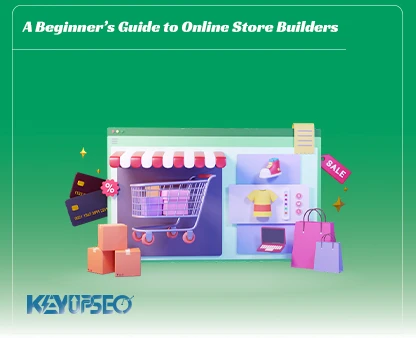
How to Make UTM Links for Tracking
What do you do if you realize that among Instagram ads, Telegram, reports and banners, only ads on a specific Instagram page bring you customers?
Well, it is clear that you spend more on advertising on that Instagram page and use other advertising channels less. This way, costs are lower and sales are higher. Now the main question is how to find out which channel or ad has brought us more customers? The solution is in the hands of UTM links.
To track purchased bulk traffic or to find out from which ad, channel, site, or platform customers enter the site, you must be able to create a UTM link.
The way UTM links work is very easy and that is why we recommend using it in every advertising campaign.
In this content, we want to teach you Step-by-Step UTM Link Creation so that you can better monitor your customers.
What is UTM?
UTM stands for Urchin Tracking Module. If we translate it into Persian, it becomes: Urchin Tracking Module! Well, this translation doesn't give us much.
Urchin was the name of a digital analytics software company that Google bought and eventually created Google Analytics.
One of the innovations of Urchin is these UTM links that were inherited for use in Google Analytics.
UTM, in simple terms, means adding 5 parameters to the end of Internet addresses (URL) to record and track information from the source.
So now let's see how this link works in practice and how we can use it.
Why should we use UTM links?
Suppose you have an online store, and you want to advertise to attract more customers. For this special auction, you want to use all the methods of banners, influencers, Google Ads, and advertising through backlinks. In all these advertising methods and channels, you provide a link to your website, landing page, or product page.
The advertising audience reaches your site and product by clicking on advertising banners, pulling up links in stories, clicking on Google Ads, or clicking on backlinks.
After publishing the ads, many customers come to you from these links, but you will have a small problem; you do not know which ad or which method had a better and greater impact. If you know which advertising channel had the most customers for you, then you will spend more on it next time and do not spend on channels or ads that had the fewest customers. Also, if the ads in some channels do not have good results, you review and correct them.
The importance of creating UTM links
If you use normal links for advertising, you will only see the referring website or platform (for example, Facebook or the name of the site publishing your backlink) in the Google Analytics report. If your link is related to social networks and a link is published in the form of several posts, you will not understand which post was clicked.
But with UTM, you can monitor and track the exact statistics of all links.
What is the structure of a UTM link?
Simple links have a specific structure. Look at the structure of these two links:
- www.keyupseo.com
- keyupseo.com/Blog.html
The first link is the home page of our site, and the second link opens the blog page. These two links do not have any other information with them.
Now we want to place an advertising banner on another site and link to the blog page. We can simply place this link (keyupseo.com/Blog.html) in the banner or UTM.
To UTM, we add three main parameters to the end of this link. These three parameters include source, media, and campaign name, respectively.
These three main parameters are added to the link with the following fixed names, and after the equal sign, we write our desired name.
- utm_source
- utm_medium
- utm_campaign
https://keyupseo.com/?utm_source=backlink&utm_medium=banner&utm_campaign=SEOblog
We will introduce each of these parameters below.
UTM Link Parameters
Each UTM link consists of 2 main parts. The first part is your link. That is, the page of your site that users will enter after clicking on the ad.
The second part of the UTM link consists of 5 parameters. The use of 3 of its parameters is mandatory, and 2 of its parameters are optional. You can write or, so to speak, write your desired value for each parameter.
We will explain each of these parameters below.
-
Campaign Source
Using this parameter, we can understand what source the input to our site comes from. For example, Google, Instagram, Telegram, Facebook, another site where our backlink is published, and… Each is considered a campaign source. This parameter is displayed in the UTM link as utm_source, and its use is mandatory.
For example, you have taken an action to boost Instagram followers, and then you want to send users to a target link. Enter the source in the Instagram UTM link (utm_source=Instagram) to know that the inputs were through this platform.
-
Campaign Medium
Using this parameter, we can determine the type of advertisement we are considering. Our advertisement can have different types such as banner, email, or click-through advertising (CPC). This parameter is placed as utm_medium in the UTM link, and its use is mandatory. For example, utm_medium=banner means that your advertisement type is a banner.
-
Campaign Name
You can specify a separate name for each of your campaigns. This parameter is displayed as utm_campaign in the UTM link and is considered a mandatory parameter. For example, let's assume that your advertising campaign is run to offer discounts to users. In this case, the phrase utm_campaign=offer means the name of your campaign is offer.
-
Campaign Term
Using this parameter, we can understand what words the site users used to enter our site. This parameter is used for advertisements such as Google Ads, where the user clicks on the advertisement and enters the site after searching for our desired keyword. This parameter is displayed in the UTM link as utm_term, and its use is optional.
Given that the Campaign Term has a specific use, you can use it in specific cases to monitor additional information. For example, write in it. These links are related to 20% discounts.
-
Campaign Content
This parameter determines the content of your advertisement. For example, let's assume that your banner is to advertise the product “bag”. In this case, you can include the parameter utm_content=Bag in your UTM link. Using this parameter is optional.
By putting all these parameters together, you can create your link.
How to create a UTM link?
You don't need any tools to create a UTM link. Just open a text editor and add the required parameters to the end of the address. UTM link creation tools only make the job easier for you, and the possibility of errors in the tools is lower.
We also recommend using tools.

UTM link creation tools
Our recommended tool is the UTM link creation tool from Google.
Another recommended tool that makes the job much easier is the Google Analytics URL Builder extension. Install this extension on the Chrome browser. Click on the extension on the same page where you want to create the link. In the window that opens, enter the required parameters and finally copy the link. This extension has two interesting advantages:
- You can create a profile for your links so that you can create your own UTM trackable link without entering parameters and with just one click.
- You can connect the Bitly link shortening service to it and get a short link at the same time.
It doesn't matter which tool you use to create links; the final output is the same and can be understood by Google Analytics.
If you want to create UTM links yourself without a tool, you should use a fixed template.
Creating UTM links manually
As we said, you should not use tools to create links.
It is necessary to enter three parameters: name, medium, and campaign source. You can leave the other two parameters, campaign content and campaign keyword, blank.
Take a look at this example link:
https://keyupseo.com/Buy-Organic-Traffic.html/?utm_source=google&utm_medium=cpc&utm_campaign=offer&utm_content=OrganicTraffic
This link tells us that the source of our inputs is Google, its type is click, the campaign name is offer, and the type of product we want to advertise is Organic Traffic. Therefore, when we open our analytics, we can get reports based on each of these parameters and examine the number of inputs we have had through Google Ads.
Now let's go step by step and see how we can create the link above.
We have a special offer for those who are active in Google Ads. By reading the article Methods of competition in Google Ads, you can learn how to compete in Google Ads without increasing your budget.
-
Specify your website URL
The first thing you need to do is determine the landing page of your site. That is, specify which page of your site the user will enter after clicking on your banner or ad link. So far, you have created the first part of your UTM link:
https://keyupseo.com/Buy-Organic-Traffic.html/?
Remember that if you are going to create your UTM link manually, you need to use the “?” symbol after your site address. Of course, if you use UTM generator tools, this question mark will be automatically added at the end of your link.
-
Determine the Campaign Source
Now you need to specify from which source you want to get input. That is, you need to specify whether your input will be from the Google site or whether your source is your backlink inputs on another site. Let's assume your input source is Google Ads. In this case, your utm_source will be Google.
https://keyupseo.com/Buy-Organic-Traffic.html/?utm_source=google
If your source is a backlink on the Amazon site, your link will look like this:
https://keyupseo.com/Buy-Organic-Traffic.html/?utm_source=Amazon
-
Determine your Campaign Medium Type
Now it's time to determine your media type. Is your ad an email that you have sent to your email banks? So your media type will be emailed. Is your ad a banner? So you can determine the media type of this campaign as a banner.
In the example above, since our goal is to advertise on Google, we need to set the media type to CPC. Because we know very well that Google Ads is per click. So far, our UTM link is created as follows:
https://keyupseo.com/Buy-Organic-Traffic.html/?utm_source=google&utm_medium=cpc
-
Specify the Campaign Name
Now it's time to choose a name for our campaign. Of course, it doesn't matter what name you use, but a relevant and correct name will save you from possible confusion. Since our goal is to advertise widely and at a discount, we can name our campaign offer.
Our UTM link is created as follows:
https://keyupseo.com/Buy-Organic-Traffic.html/?utm_source=google&utm_medium=cpc&utm_campaign=offer
-
Set Campaign Content
Here, we can also set the type of media content for our ad. For example, if our banner ad is for advertising a TV product, we can set our campaign content to TV. In the example above, given that the goal is to increase Google traffic, we can set our campaign content to Organic Traffic. As a result, the following link is obtained:
https://keyupseo.com/Buy-Organic-Traffic.html/?utm_source=google&utm_medium=cpc&utm_campaign=offer&utm_content=OrganicTraffic

Where and how to see the link report
To see the report on UTM links or so-called campaign links, you need to use Google Analytics. Note that when you use a UTM link, this information is received and recorded as a dimension in Google Analytics. So you can use it in all Analytics reports or even create your custom reports based on UTM information.
Google Analytics has a report for campaigns by default. In this report, all parameters are displayed in a table along with other metrics such as bounce rate, conversion rate, revenue, etc. In short, with this report, you will find out how much interaction the users who came from each link had.
To see this report, create a new report in the Explore section of Google Analytics and add the Page path + query string parameter to the report so that you can see the addresses along with their query string, which is the UTM link.
Don't leave external links without UTM
We've seen how useful it is to use trackable and monitorable links. By using UTM, you prevent wasting money and have better control over your internet marketing.
So it's better to use UTM wherever you spend money on link building or advertising.
Frequently Asked Questions About UTM
You may have questions about using UTM links. We've answered some common ones here.
Can UTM links be used in internal linking?
Don't do this at all! Suppose a user enters the site from Twitter to read an article. After reading the article, he goes to the home page on the UTM internal link, A link in the form of (https://www.yoursite.com/?utm_source=blog). Now, if you look in the Analytics report, you'll see that it shows you that the user entered the home page from the blog, and you're missing information about logging in from Twitter.
By UTM internal links, you will only ruin the analytics reports.
Does using UTM links affect the SEO of the site?
No, using UTM links does not impact SEO and site ranking.
These parameters are suggested by Google itself, and using them will not increase or decrease the site's ranking.
Does using UTM links reduce clicks?
Using UTM links does not reduce clicks by itself. It is only the appearance and length of these types of links that cause some users not to click due to distrust.
You can use link shortening services so that the user does not see the long link at first glance.
Is there a character limit for UTM links?
There is no character limit for these links, but in any case, it is recommended to make the links as short as possible.
To make the links shorter, choose shorter parameters.
Can UTM links be used on social media?
Yes, and you should do so. A large part of the traffic to websites with active social media comes from links in posts or profiles.
We have good news for users who are active on social media and the YouTube platform. Buy YouTube views from the keyupseo system can help your channel grow and attract more users.
Release date : 11 May, 2025













